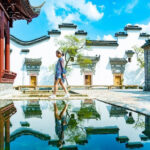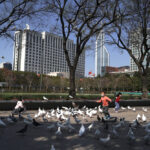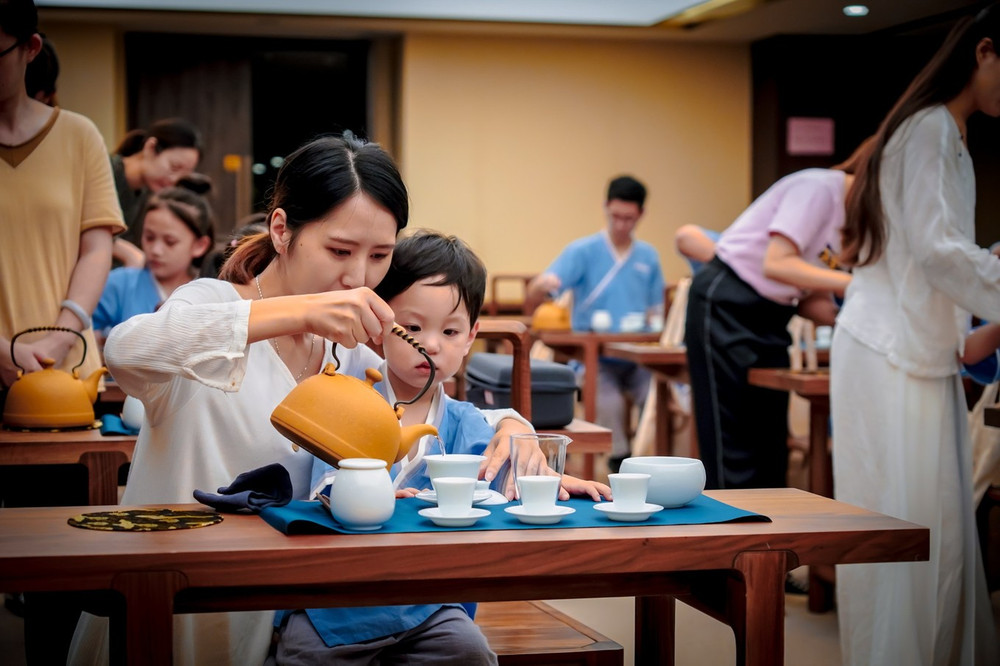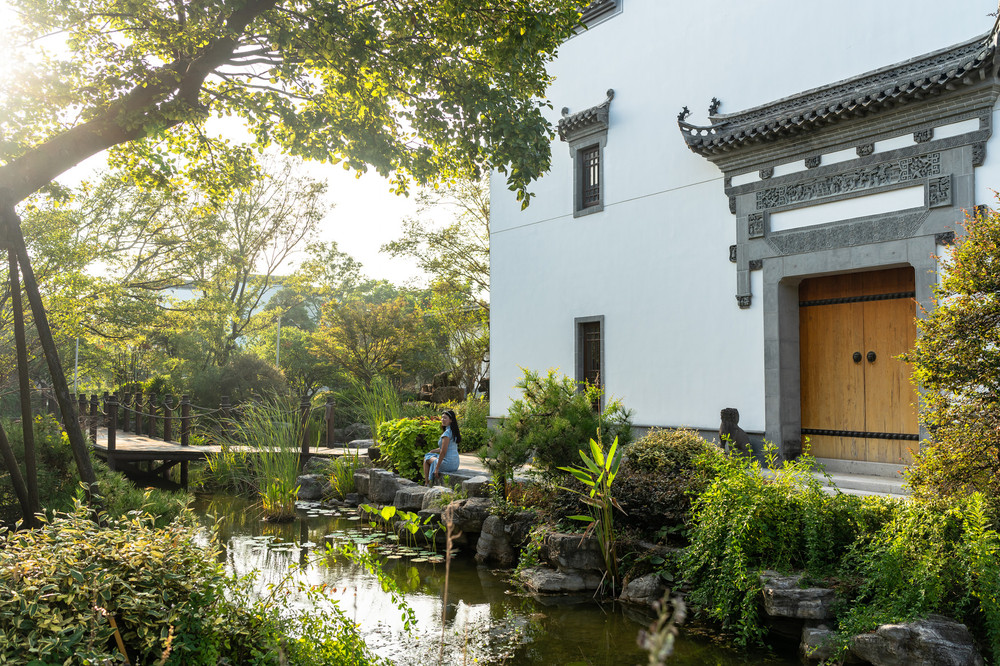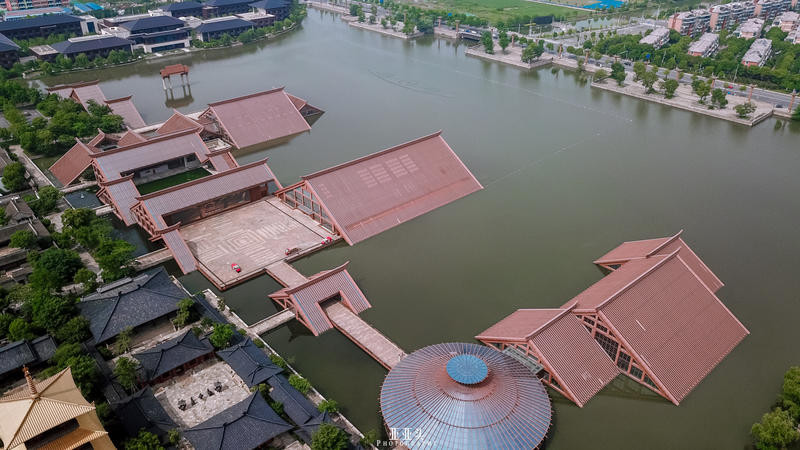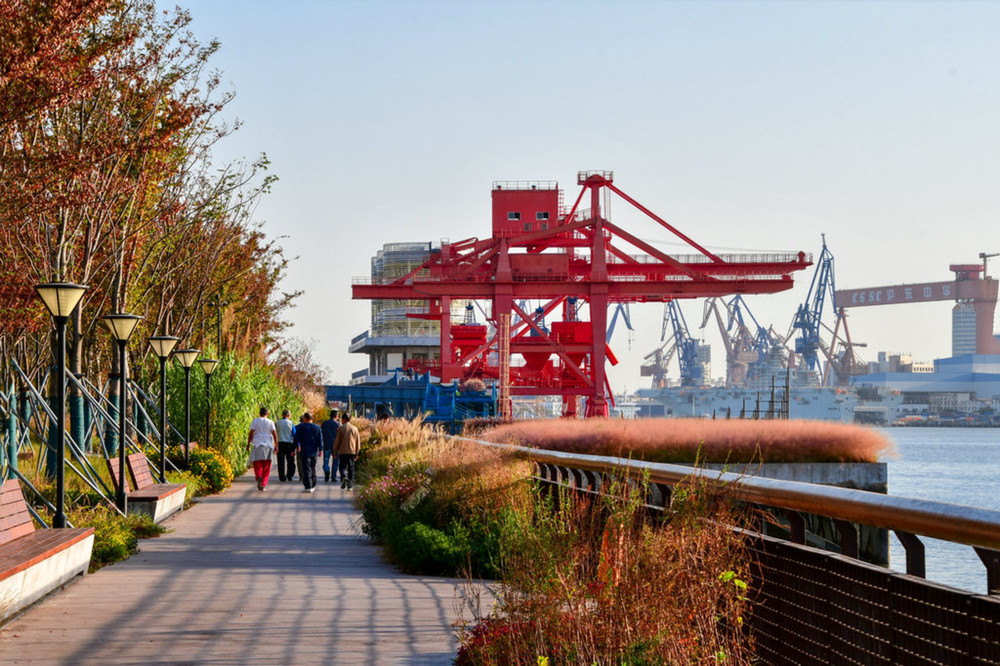Duration: 4 days. Time: November. Per capita cost: 4000 yuan. With whom: Alone. Ways to play: Self-driving, cultural, independent travel, petty bourgeoisie.
Published on December 26, 2019, 13:57.
Preface: Coming to Shanghai on a business trip for the first time. After finishing work ahead of schedule, I met up with a female friend to catch up and by the way, get to know this charming city of Shanghai. Unfortunately, she is about to fly to South Korea soon. Otherwise, she could show me around this ‘magical’ city. To make up for it, her Tiguan L accompanies me to stroll around this city.

The author visited these places: The Bund, Huangpu River, Lujiazui, Shanghai Shikumen, Suzhou Creek, Waibaidu Bridge, Chen Yi Square, Oriental Pearl Tower, Jin Mao Tower, International Convention Center, Nanjing Road Pedestrian Street, Shanghai Film Park, Changfeng Park, Chongming Island, Shanghai Yangtze River Bridge, Thames Town, Zhongshu Bookstore.
Hello, Shanghai! I want to know you. Hey, welcome to Shanghai. Please fasten your seat belt. In the next few days, I will accompany you on your journey. Are you ready?
On the glorious and prosperous night of Shanghai, being at the Bund and looking at Lujiazui Financial Center on the other side of Pudong along the Huangpu River. Then looking back at the international architecture on Puxi side. Standing in the middle gives a feeling of traveling through the past and the future.
What comes to mind when you mention old Shanghai? Is it an old record in a gramophone, a rickshaw, or Shikumen?
Here you can fulfill your dream of climbing buildings in Shanghai. You can summon cats and also take pictures of the pink sky city of Monument Valley.
Escape from the cold steel forest of Shanghai. Go to the highway on the large island with the title of the third largest island in China and head towards the end of the world. Embrace nature and release yourself.
There is a small town mainly featuring European style and architecture. Being here is like walking on a British street. Experience the British style town with exotic charm.
The ‘skyscraper dream’ of old Shanghai – Shanghai Mansion. By the Suzhou Creek and the Huangpu River, there is an old building with a bronze tone. It is Shanghai Mansion (formerly known as Broadway Mansions). It is only a street away from Waibaidu Bridge! There is a passage describing it like this: Shanghai Mansion is located by the Suzhou Creek and quietly watches the Huangpu River. It is the Broadway Mansions that rose in 1934. It carries the ‘skyscraper dream’ of old Shanghai and witnesses that precious golden age. The mansion was built by British businessmen. In the past more than 80 years of business history, it has received hundreds of heads of state and government leaders from all over the world. More than half a century has passed. Today’s Shanghai Mansion内敛s the changes of wind and clouds in the long river of history into its bones and slowly precipitates. Push open the heavy door of Shanghai Mansion and start a modern journey through old Shanghai! The hotel lobby is not large. The front desk is in the left corner as you enter and it is also very nostalgic. On both sides of the hotel lobby, there are photo walls hanging, highlighting the history and heritage of this city. In the front of the lobby, there is also a piano that was shipped from England when the mansion was just completed. This is a treasure of Shanghai Mansion. The style of the entire hotel is nostalgic and retro. The guest rooms are the same. The river-view room is facing the core area of the Bund. The room is not large and the decoration is not very gorgeous, but it has a very strong sense of historical gravity! On the contrary, this gives it its own characteristics. There is also an old cabinet of the same age as the mansion in the room.
Shanghai at night, Shanghai at night, you are a city that never sleeps. In addition to its own magic, modernity, fashion and other characteristics that attract people, the historical atmosphere and retro feeling that Shanghai exudes by itself are also incomparable to other cities.Hello, Shanghai! I want to know you. Hey, welcome to Shanghai. Fasten your seat belt, for in the next few days, I will accompany you on your journey. Are you ready?
On the glorious and prosperous night of Shanghai, being located at the Bund and looking at Lujiazui Financial Center in Pudong across the Huangpu River along the bank, and then looking back at the international architecture complex in Puxi, standing in the middle gives a feeling of traveling through the past and the future. What will you think of when it comes to old Shanghai? Is it the old records in the gramophone, rickshaws, or Shikumen? Here, you can fulfill your dream of climbing buildings in Shanghai, summon cats, and also take pictures of the pink sky city of Monument Valley. Escape from the cold steel forest of Shanghai and go to the highway on the large island with the title of the third largest island in China and head towards the end of the world, embrace nature, and release yourself.
There is a small town mainly featuring European style and architecture. Being here is like walking on a British street. Experience the British style town with exotic charm. The ‘Skyscraper Dream’ of old Shanghai – Shanghai Mansions. By the Suzhou River and on the banks of the Huangpu River, there is an old building with a bronze tone. It is the Shanghai Mansions (formerly known as Broadway Mansions), just a street away from the Waibaidu Bridge! The passage describing it goes like this: The Shanghai Mansions is located by the Suzhou River and quietly watches the Huangpu River. It is the Broadway Mansions that rose from the ground in 1934, carrying the ‘skyscraper dream’ of old Shanghai and witnessing those precious golden years. The building was built by British businessmen. In the past more than 80 years of business history, it has received hundreds of heads of state and government leaders from all over the world. More than half a century has passed. Today’s Shanghai Mansions内敛s the changes of wind and clouds in the long river of history into its bones and slowly precipitates. Push open the thick door of the Shanghai Mansions and start a modern journey through old Shanghai!
The hotel lobby is not large. The front desk is in the left corner as you enter, and it is also very nostalgic. The hotel lobby, adorned with walls of photographs on either side, showcases the city’s history and depth. At the front of the lobby stands a piano that was shipped from England soon after the completion of the Bund Building – a treasure of the Shanghai Bund Hotel. The entire hotel is styled in a nostalgic and retro fashion, and the rooms are no exception. The river view rooms face the core area of the Bund, with modest room sizes and unpretentious decorations, yet they exude a strong sense of history! This, in turn, gives them a distinctive charm, with antique cabinets in the rooms that are as old as the building itself.
Shanghai, the city that never sleeps, is not only alluring for its inherent magic, modernity, and fashion but also for the historical aura and retro vibe that other cities cannot match. A visit to Shanghai inevitably includes a trip to the Bund. The Bund is an essential destination for tourists, yet many are unaware of the century-old steel structure bridge over the Suzhou River at the northern end of the Bund. It marks the confluence of Shanghai’s Huangpu River and Suzhou River, the starting point of the former British Concession – the Garden Bridge. Its steel structure, built in 1908, has reached 110 years of age. From the beginning, it allowed free passage for vehicles and pedestrians, hence the name Garden Bridge (formerly known as the ‘Wells Bridge’, a wooden bridge). This magical steel structure, after a century, still stands proudly, witnessing Shanghai’s rise and rapid development over more than a hundred years. Despite the many changes in Shanghai, the bridge remains a steadfast guardian and observer. It connects not only the banks of the rivers but also Shanghai’s past and future. The Garden Bridge is also recognized in many old Shanghai movies and television shows, where many romantic scenes of old Shanghai couples and intelligence exchange scenarios are set on the bridge. The most memorable is the scene from ‘Romance in the Rain’ where Yi Ping jumps off the bridge. When I first stepped onto the Garden Bridge, there were also film crews shooting scenes here. However, I am particularly fond of the Garden Bridge at night, with its rich lighting hanging on the bridge, changing colors between red, yellow, blue, orange, and white, dressing the bridge in a very eye-catching attire! Under the night sky, the Garden Bridge complements the Lujiazui Financial Center on the opposite bank, offering a superb view, which is why many people choose to take wedding photos and portraits here.
Following the Garden Bridge, one would pass the People’s Heroes Monument and Chen Yi Square, arriving at the main site of the Bund. Along the Huangpu River, one can face the Lujiazui Financial Center on the opposite bank of the river, while looking back reveals the Western-style architecture of the Bund on the west bank, creating a feeling of traveling through time and space.Discover the allure of urban adventure and feline charm at Changfeng Joy City in Shanghai. The rooftop here is a spectacle of pink, featuring a sky-high track that seamlessly blends sports, fitness, fashion, art, and leisure. It’s a haven for children and adults alike, with the most striking feature being the cat sculpture known as Ship’s Cat. Created by contemporary Japanese artist Kenji Yano, this 4-meter-tall feline dons a space-themed outfit, its deep blue eyes drawing visitors in with their magnetic allure.
The rooftop is traversed by a vibrant pink track, with sections that seem to float in mid-air, enveloping the space in a soft, feminine charm. The pink archway is a photogenic delight, complementing any blue sky and enhancing the softness and beauty of skin tones in photographs. The Pink Monument Valley has already become a playground favorite, with its rabbit lawn and rooftop views. The artificial lawn is pristine, brightly colored, and dotted with adorable rabbits.
From the vantage point of Denggao Park, the对面的Changfeng Park is a sight to behold, with its trees and skyscrapers creating a和谐的景致 reminiscent of Central Park in the United States. For those who grew up with Guo Jingming’s novels, Chongming Island offers a journey to the place where Yi Yao jumps into the sea in ‘Sadness Flows Like a River’. This island, featured in both Guo’s work and the Korean drama ‘Goblin’, is the third largest in China and a national geological park. It’s an escape from the city’s hustle, a tranquil retreat just over 70 kilometers from the city center, accessible via the Yangtze River Tunnel and Bridge, with a toll of 50.
The journey to Chongming Island is as enchanting as the destination itself. The Shanghai Yangtze River Bridge casts a spell on all who pass, its charm evident under any sky. Beyond the highway, the road narrows, but the sky’s blue deepens. Following the Chenhai Highway to Dongtan Wetland Park, the straight path is lined with captivating scenery. Even in winter, Chongming Island boasts lush greenery, which transitions into scattered wildflowers as you venture further. The island’s trees display a magical palette of colors, from the red of maple leaves to the orange-yellow of fallen foliage.
The island’s breeze whispers freedom as you drive, urging you to roll down the car window and inhale deeply. The hidden paths off the main road are each worth exploring, a tapestry of beauty. The vast outer perimeter of the scenic area is dotted with rows of wind turbines, each more impressive up close, dwarfing visitors with their size, akin to standing beside ‘Evangelion Unit-01’.
Dongtan Wetland Park is defined by its expansive reed beds. As the wind sweeps through, the golden waves of reeds sway, creating a serene, enveloping landscape. The rustling of the reeds is a soothing soundtrack to the deserted wetland, carrying thoughts away on the wind.
Arriving at Dingba around 3 PM, the river here meets a vast reed marsh, standing out for its connection to the river’s edge. The gloomy Shanghai weather nears dusk around 4 PM, with the river water rising and roaring with the tide. The reeds rustle, accompanied by the patter of light rain and the cold sea breeze, but the allure of the scenery remains undeterred. The sense of extension at Dingba is profound, offering a walk at the world’s edge, awe-inspiring and soothing to the soul.Here, where the silt carried by the Yangtze River meets the sea, the turbid and churning river water is complemented by the powerful sea breeze and passing ships. It is a place where worries seem to settle, turn into land, and become part of an island. At night, the Shanghai Yangtze River Bridge exudes an exotic British charm.
In Songjiang District, Shanghai, there is a town dominated by European-style architecture. Walking here feels as if you are strolling through the streets of England. This is Thames Town, which lacks the densely packed skyscrapers of the city center and the bustling crowds of the Bund. Instead, it offers Gothic churches, British-style buildings, Victorian terraces, ancient castles, squares, fountains, and boutique coffee shops. The winding cobblestone paths, colorful tree-lined avenues, and Shanghai’s most beautiful bookstore, ‘Zhong Shu Ge’, make this a town full of enchanting dreams with a British style. Walking on the streets feels like being in England itself, with a resemblance to the Thames Town in England that is strikingly high, even down to the black cobblestone paths.
The most distinctive feature of the town is the Gothic church, visible upon entering through the main door. Its height makes it a central symbol of the town, visible from any corner. Further back are various characteristic streets, the town square, and especially the Thames River, which under the reflection, is filled with oil painting colors and a warm, romantic small bourgeois sentiment.
I had heard that Shanghai’s most beautiful bookstore, ‘Zhong Shu Ge’, was here. As a book lover, I visit local characteristic bookstores in every city I visit, and naturally, I couldn’t miss ‘Zhong Shu Ge’ when I came to Shanghai. The traditional Chinese characters ‘Zhong Shu Ge’ above the entrance are very eye-catching. Stepping inside is like entering an ocean of books, with books covering the walls, floors, and ceilings, even the transparent glass on the ground is filled with books.
The extensive use of glass is a design feature of Zhong Shu Ge, and through the large glass windows, one can see the bookshelves and displays. Books also hide behind the staircase leading to the second floor. The upper and lower levels of the bookstore are bustling with people; some are engrossed in reading, while others are navigating through various spaces, capturing photos, likely drawn by the reputation of Shanghai’s ‘most beautiful bookstore’. Each reading area is uniquely designed, filled with creative humanistic sentiment, complementing the town’s exquisite ambiance and British style.
The VIP reading area on the second floor, adorned with a starry sky, has a darker overall tone, reminiscent of reading by candlelight. The church-like pointed ceiling space is particularly appealing, with its semi-arched high ceiling design, white bookshelves curving along the walls on both sides, seamlessly integrated with the peak, and white desks paired with black chairs, exuding an air of solemn elegance. It evokes a sense of sanctity. Another room features a large glass roof with curved bookshelves on all sides, and square pillars with mirrors on the top and in between, reflecting an open space.
When tired from walking, one can sit down to admire the ivy on the wall or watch the passers-by, everything so casual, being a quiet beauty, slowly savoring the slow pace of life in a British style. One can also find a quiet corner to take some portraits.
Postscript on self-driving route planning: Day 1: Depart from Guangzhou to Shanghai, check into the hotel—Waibaidu Bridge—The Bund—Nanjing Road. Day 2: 1192 Lane Shanghai Retro Style Street, Changfeng Joy City. Day 3: Chongming Island. Day 4: Thames Town—End of the trip, fly back to Guangzhou.
Over the course of 4 days, I’ve experienced the bright and bustling nights of the metropolis, the charm and imprints of old Shanghai, the fresh and small town vibe, and escaped the cold, steel forest of the metropolis to embrace nature and release myself, feeling the foreign British style town. Each time a trip ends, I think about bringing the children next time, and exploring this city of a thousand faces with my family. Until we meet again, Metropolis of Magic.



